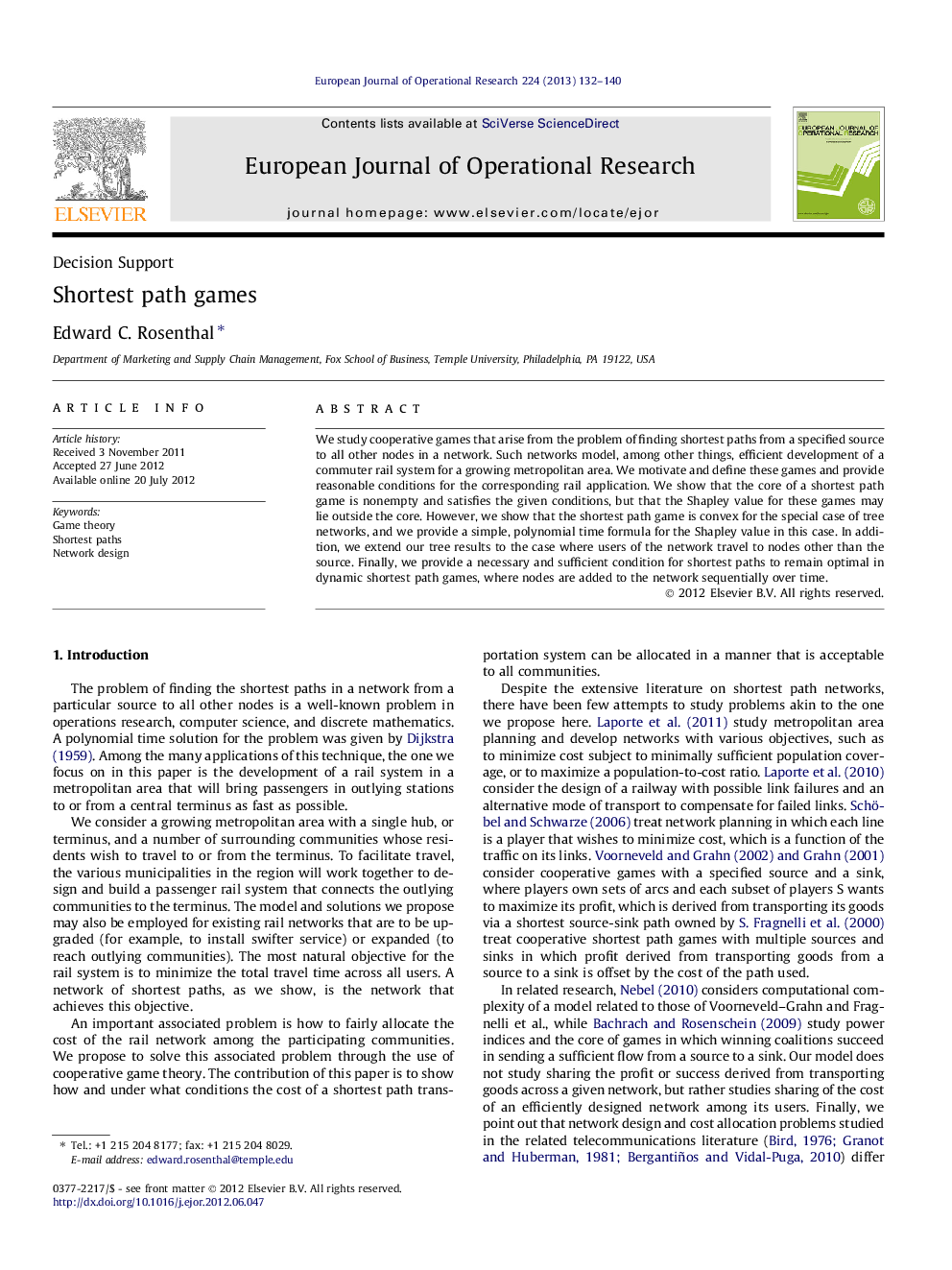| Article ID | Journal | Published Year | Pages | File Type |
|---|---|---|---|---|
| 476814 | European Journal of Operational Research | 2013 | 9 Pages |
We study cooperative games that arise from the problem of finding shortest paths from a specified source to all other nodes in a network. Such networks model, among other things, efficient development of a commuter rail system for a growing metropolitan area. We motivate and define these games and provide reasonable conditions for the corresponding rail application. We show that the core of a shortest path game is nonempty and satisfies the given conditions, but that the Shapley value for these games may lie outside the core. However, we show that the shortest path game is convex for the special case of tree networks, and we provide a simple, polynomial time formula for the Shapley value in this case. In addition, we extend our tree results to the case where users of the network travel to nodes other than the source. Finally, we provide a necessary and sufficient condition for shortest paths to remain optimal in dynamic shortest path games, where nodes are added to the network sequentially over time.
► We model cost allocation for commuter rail systems using cooperative game theory. ► Shortest path games on these rail systems have nonempty cores. ► Shortest path games on tree networks are convex. ► The Shapley value for shortest path games on trees is efficient to compute. ► Dynamic cooperative games are applied to networks that grow over time.
